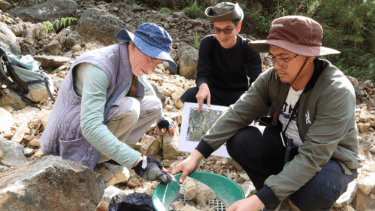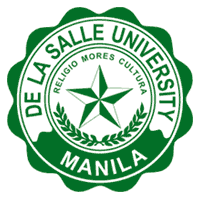How can abandoned mines be a new home for our people?

Sponsored by

A team of professors from the DLSU Gokongwei College of Engineering has teamed up with international partners to bring new hope to an abandoned mining site in Benguet, a province in the northern region of the Philippines. Through transdisciplinary measures that underscore the local community’s knowledge and practices, they are creating a model of a sustainable environment for legacy and active mines across the globe.
“Mining the critical minerals will play an important role if we want to sustain what we call our ‘modern world.’ From smartphones to e-vehicles, we need them,” says Dr. Michael Angelo Promentilla, professor of the Department of Chemical Engineering and head of the Waste and Resource Management unit of the DLSU Center for Engineering and Sustainable Development Research.
Promentilla is also part of the Bio+Mine Project, which is currently working on how to mitigate the impacts of mining toward making an abandoned mine site livable and thriving again, especially for the indigenous communities affected by past mining activities.
For the Bio+Mine Project which is being conducted at the legacy mine in Santo Niño, Tublay, Benguet, he and his fellow Chemical Engineering professors Dr. Arnel Beltran and Dr. Aileen Orbecido serve as co-lead researchers from DLSU. Their team works in collaboration with the Natural History Museum (NHM), Imperial College London (ICL), Mindanao State University-Iligan Institute of Technology (MSU-IIT), and University of New South Wales Sydney (UNSW).
“When we first came to Tublay, the people were very hesitant to work with us. They thought we were working for the reopening of the mine,” Beltran shares. The local community’s fears were not unfounded. At the time, they were experiencing the harmful effects of mining, particularly the acid mine drainage that had threatened both their health and the environment. Their water resources had also become scarce, especially during summer.
Beltran adds that after several focus group discussions, interviews, and community validations with the help of the local government, the people realized that the nature of the research by the Bio+Mine team was to assist in rehabilitating the place by understanding the problems and looking at potential solutions.
The work of the multidisciplinary scientists for the Bio+Mine project involves gathering social, biological, environmental, and geochemical data toward the development of a full-scale system of interventions for the succeeding years.
Regaining the community’s trust
Since the start of the project in 2022, one of the teams has already conducted drone imaging activities to map and assess the topography and biodiversity of the area. Another group has investigated
its vegetation to study the presence of mining pollutants, and another team has studied the mineral deposits in soil, rocks, and water. At the same time, another team has handled the social component of the project, seeking dialogues with the residents to determine their perceptions and aspirations as they work together to revive the place.
Beltran recalls the first visit of their UK partners in 2022, when a typhoon struck the region. The team pushed through with their fieldwork, undaunted by the challenges posed by the terrain and the weather.
For the community, it was a kind of assurance that the Bio+Mine proponents were bent on seeking sustainable solutions for them.
“They said many came but never returned. That’s why we really ensure that once we’re done with the data collection, we go back and provide them with the necessary outputs of the project,” he shares.
The DLSU team focuses on the water component and the social engagement part of the project. Beltran also shares about the research being conducted by another DLSU professor, Dr. Renan Tanhueco from the Department of Civil Engineering. The latter’s study focuses on rainwater and its potential to sustain the community’s water needs for their households and farming, especially during dry season.
“Our recent activity was last March when we went to the community again to showcase several assessments of the second- year activity. Nakakatuwa—they asked a lot of questions on how to move forward. Their rehabilitation is really science-based,” Beltran quips.
Toward social acceptability
“We as engineers believe that mining is a vital industry in the Philippines,” Promentilla says. He notes how the country is the world’s second-largest exporter of nickel and one of the top 5 with the largest mineral reserves, yet it continues to face a lack of investors for the sector.
He links the relevance of the mining sector to UN Sustainable Development Goals. “Why is this relevant today? To reach this vision of a clean energy system, we would use metals like nickel, which is important for electric vehicles and batteries.” He further stresses the need for the country to look into the social acceptability of the sector and push for sustainable mineral resource management.
“Bio+Mines was conceived to demonstrate how we could rehabilitate legacy mines. Hopefully, it’s a success story of a transdisciplinary research,” he says.
Promentilla points out that by making the locals not merely beneficiaries but also co-designers and co-developers of their own communities, it is viable to create a plan that is nature-positive. He ends by saying the work ahead should be transdisciplinary, science-informed, and futuristic enough to believe that mining areas can turn into sustainable landscapes.
Contact: Dr. Arnel Beltran | arnel.beltran@dlsu.edu.ph